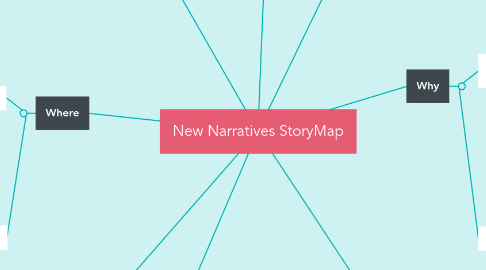
1. What
1.1. What can you do, how can you get involved?
1.1.1. Case studies
1.1.2. Inputs of participants
1.1.2.1. Workshop reports Day One
1.1.2.1.1. Padlet: Tuesday workshops
1.1.3. Possible upcoming projects?
1.1.3.1. Social Padlet?
1.1.3.1.1. Padlet: New Narratives Social StoryBoard
1.1.4. Good practice
1.2. Graphic from Coline
1.3. DE-TR relations in the youth field
1.3.1. Annegret/Yoruk's 2015 report?
1.3.1.1. translate to English
1.3.2. Handbook & brochure
1.3.2.1. translate to English
1.3.3. BAckground development
1.3.3.1. Aim of event
1.3.3.1.1. Invite text
1.4. Best practice
1.5. Tools and tips
1.5.1. Resource Pooling
1.5.1.1. Padlet created
1.5.1.1.1. Update from everyone during the week
1.5.2. 5 Tip texts?
2. Where
2.1. Background Germany Turkey
2.1.1. Keynotes
2.1.1.1. collect inputs in magazine format
2.1.1.2. Collect Powerpoints/notes for speeches from keynote speakers
2.1.2. Background info on the countries
2.1.3. Chances and challenges
2.1.3.1. Elephant in the room
2.1.3.1.1. Collect inputs from facilitators during event
2.1.3.2. Does political situation affect partnerships
2.1.3.2.1. What solutions?
2.1.4. Further steps of DE/TR relations
2.1.4.1. Where are we now, wher ego in the future
2.1.4.1.1. Institutions contribute (questionnaire?)
2.1.4.2. Participants contributions?
2.1.4.2.1. Quotes?
2.1.5. Report from fishbowl
2.1.5.1. Quotes & comments
2.2. Graphic from Coline
3. How
3.1. Grant funding options, realisation options
3.1.1. Contacts
3.1.2. Coggle mind map opportunities
3.1.2.1. Coline to create graphic?
3.1.2.1.1. Participants add post-its during the week
3.1.3. Partnership
3.2. Graphic from Coline
3.3. Resources and Tools
3.3.1. Padlet pool of resources
4. Keywords
4.1. Inclusion
4.2. Learning not just academic
4.3. Language barriers
4.4. Linking formal/non-formal approaches
4.5. Diversity brings strengths
4.6. Creative methods for social change
4.7. Democracy/Participation
4.8. Tool Sharing
4.9. Capacity Building
5. Who
5.1. 4 Institutions
5.1.1. Interviews of institutions
5.1.1.1. Christian? Using questions from Google drive?
5.1.1.1.1. Mawiblau film it
5.2. Different organisations, intro to institutions running the conference
5.2.1. Text provided by them
5.3. Graphic from Coline
5.3.1. Showing relationship between them? Focus of them?
6. Why
6.1. Quotes, impact, focus on the gain (more emotional, inspiring)
6.1.1. Interviews with participants as well as co-organizers, workshop leaders etc.
6.1.1.1. Connect to Interview process on Google drive
6.1.1.1.1. Interviews - Google Drive
6.1.1.2. Identify from workshops Day ONE who good to interview
6.1.1.3. Meeting on Monday 25th lunch to coordinate approach
6.1.1.3.1. Daily check in after programme - where are we with interviews/measuring impact?
6.1.1.4. Team interviews
6.1.1.4.1. By questionnaire?
6.1.2. Quotes from workshops/keynotes
6.1.2.1. Padlet
6.1.2.2. Written quotes from rapporteurs during parallel workshops and informal moments
6.1.3. Strategies for motivation?
6.2. Graphic from Coline
7. Landing page
7.1. Graphic from Coline
7.1.1. Overall messages
7.1.1.1. Susie's input on Thurs 28th?
7.1.1.1.1. Link to policy expectations
7.1.1.1.2. Does the political situation affect partnerships?
7.1.1.1.3. New narratives
7.1.1.2. Objectives of event
7.1.2. Summary of conference
7.1.2.1. Context and background development
